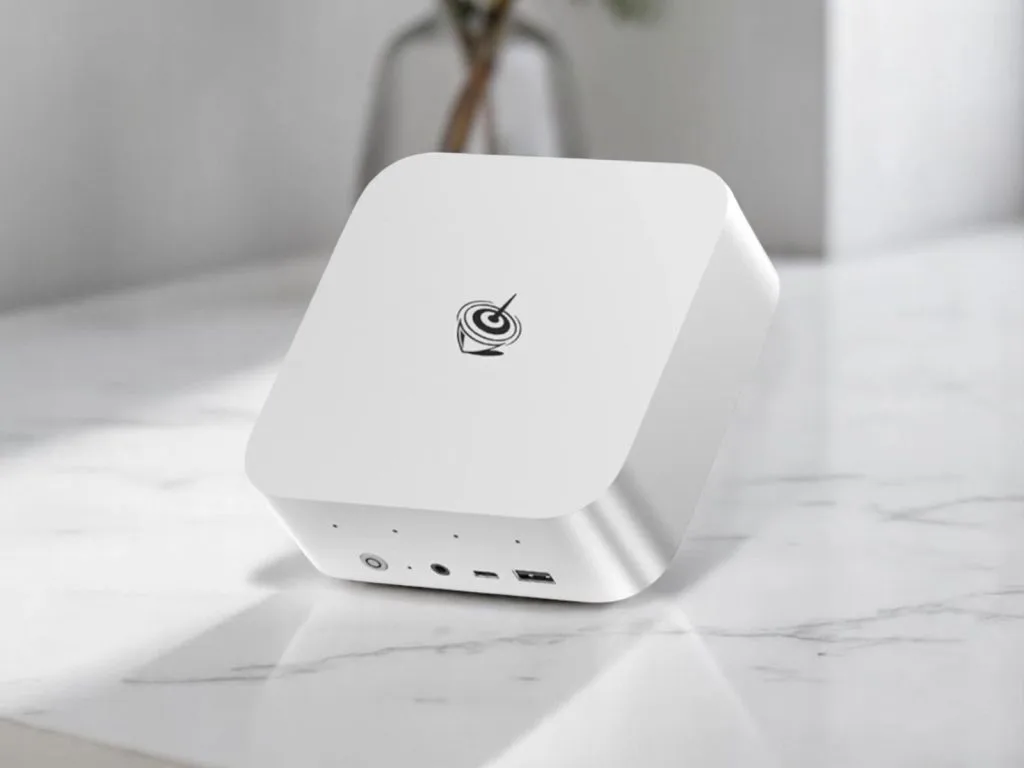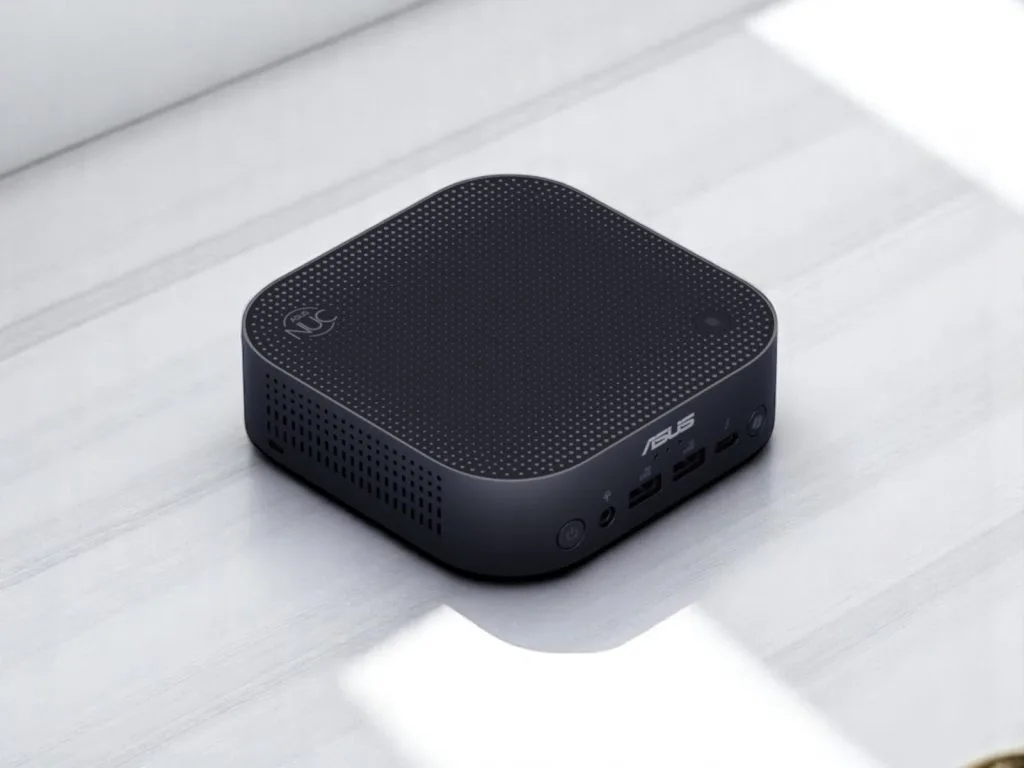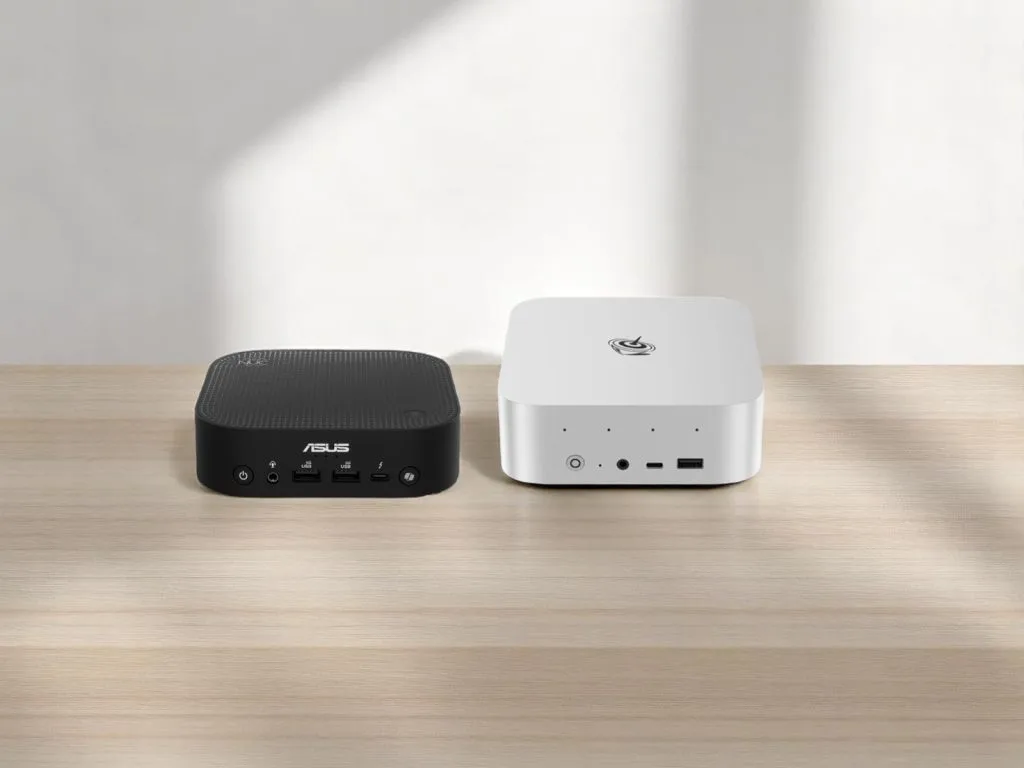I’ve been testing mini PCs for years, and I rarely encounter a device that disappoints me as much as the ASUS NUC 14 Pro AI with Intel Core Ultra 9 288V.
After spending weeks with both the ASUS NUC 14 Pro AI and the Beelink SER9 HX370, I can confidently say the ASUS model is one of the worst value propositions in the mini PC market today.
While ASUS markets this device as a “Pro AI” solution with impressive specifications, the reality is far different when you look at actual performance and pricing.
ASUS NUC 14 Pro AI vs Beelink SER9: Specifications Comparison
Let me start with the core specifications that matter most for performance and value.
Looking at these specifications, the first red flag is immediately apparent.
The Intel Core Ultra 9 288V only offers 8 cores and 8 threads, lacking the hyperthreading technology that Intel traditionally includes in their high-end processors.
In contrast, the AMD Ryzen AI 9 HX 370 provides 12 cores and 24 threads, giving it a significant advantage in multi-threaded workloads.
ASUS also offers the NUC 14 Pro AI with lower-tier Core Ultra 5 and Core Ultra 7 processors, which deliver even worse performance compared to the Ultra 9 288V tested here.
These budget variants make even less sense when considering the Beelink SER9 HX370’s superior 12-core design at a lower price point.
Intel Core Ultra 9 288V vs AMD Ryzen AI 9 HX 370: Head-to-Head
The fundamental difference between these processors explains why the ASUS NUC 14 Pro AI struggles to compete.
Intel’s Core Ultra 9 288V features a hybrid architecture with 4 performance cores and 4 efficiency cores, totaling 8 cores and 8 threads without hyperthreading support.
AMD’s Ryzen AI 9 HX 370 uses a more traditional approach with 12 full Zen 5 cores supporting simultaneous multithreading for 24 total threads.
This architectural difference translates directly into the massive performance gaps we see in multi-threaded applications and heavy workloads.
Both processors support similar maximum boost clocks around 5.1 GHz, but the AMD chip’s additional cores and threads provide significantly more computational throughput.
The Intel Core Ultra 9 288V CPU was designed primarily for thin laptops where power efficiency matters more than raw performance.
Unfortunately, this mobile-first design philosophy doesn’t translate well to desktop mini PC applications where users expect workstation-level capabilities.
Benchmark Results: The ASUS NUC 14 Pro AI Falls Behind
According to Robtech’s comprehensive testing, the performance gap between these two mini PCs is staggering across multiple benchmark scenarios.
CPU Performance Comparison
The Cinebench R23 results reveal the true extent of the performance difference between these processors.
Performance measurements show the ASUS NUC 14 Pro AI with the Intel Core Ultra 9 288V scored 2027 points in single-core and 10599 points in multi-core testing.
The Beelink SER9 HX370 achieved 2048 points in single-core and an impressive 21763 points in multi-core performance.
This means the Beelink SER9 HX370 delivers over 105% better multi-core performance than the significantly more expensive ASUS NUC 14 Pro AI.
Geekbench 6 testing confirms this substantial performance advantage for the AMD-powered system.
The benchmark results indicate the ASUS NUC managed 2874 points single-core and 11156 points multi-core, while the Beelink SER9 scored 2925 single-core and 15095 multi-core.
I find these results particularly disappointing given the ASUS NUC’s premium positioning and significantly higher price.
Gaming Performance: Beelink SER9 Takes the Lead
When it comes to gaming, I expected the Intel Arc 140V graphics in the ASUS NUC 14 Pro AI to perform better based on synthetic benchmarks.
Testing shows that in 3DMark Time Spy, the ASUS NUC scored 4280 points compared to the Beelink SER9’s 3783 points, suggesting Intel had the advantage.
However, real-world gaming tells a completely different story that I found quite surprising.
Game performance data reveals that in Cyberpunk 2077 at 1080p low settings, the ASUS NUC achieved 43 FPS average, while the Beelink SER9 HX370 reached 48 FPS average.
The difference becomes even more pronounced in games like God of War Ragnarok, where the ASUS NUC managed 51 FPS while the Beelink SER9 achieved 52 FPS.
What frustrated me most was discovering that the ASUS NUC 14 Pro AI gaming experience suffered from noticeable stuttering in Counter-Strike 2, making the game nearly unplayable.
AI Performance: Marketing Hype vs Reality
Both devices heavily emphasize their AI capabilities, but I found the practical differences minimal for most users.
The ASUS NUC 14 Pro AI boasts 48 NPU TOPS and claims up to 120 system TOPS, while the Beelink SER9 offers 50 NPU TOPS and 80 system TOPS.
Geekbench AI testing revealed mixed results, with neither system showing a decisive advantage that would justify the ASUS NUC’s significantly higher price.
AI benchmark data shows the Intel Core Ultra 9 288V scored 4922 points in quantized tests, 1304 in half precision, and 2530 in single precision performance.
I remain skeptical about the real-world value of these AI performance claims for typical mini PC users.
Power Consumption and Thermal Performance
Power consumption measurements show some interesting trade-offs between these two systems.
The ASUS NUC 14 Pro AI draws 9 watts at idle and reaches a maximum of 79 watts under load.
The Beelink SER9 HX370 power consumption is slightly lower at 8 watts idle but can reach 87 watts maximum during intensive tasks.
Temperature monitoring reveals both systems maintained reasonable thermal levels during testing, with the ASUS NUC reaching 88°C and the Beelink SER9 also hitting 88°C maximum.
However, I noticed the ASUS NUC’s fan became noticeably louder under demanding workloads, measuring 36 dBA compared to the Beelink SER9’s quieter 34 dBA operation.
ASUS NUC 14 Pro AI: Pros and Cons Analysis
ASUS NUC 14 Pro AI Pros
The ASUS NUC 14 Pro AI does offer several advantages that some users might appreciate.
Connectivity stands out as a key strength, featuring modern standards like Wi-Fi 7, Bluetooth 5.4, 2.5 Gbps Ethernet, and dual Thunderbolt 4 ports for maximum flexibility.
The compact design maintains the traditional NUC form factor that many users prefer for space-constrained environments.
ASUS as a major brand historically carries a perception of better device reliability and more established warranty repair processes compared to newer companies like Beelink or Minisforum.
However, I must note that recent user experiences on platforms like Reddit indicate ASUS’s customer support and warranty claim processes have faced significant criticism and may not always meet expectations.
Convenience features include a built-in speaker and microphone, plus a dedicated Copilot button, though I question the practicality of having an AI assistant button on a mini PC itself.
ASUS NUC 14 Pro AI Cons
The drawbacks of the ASUS NUC 14 Pro AI significantly outweigh its advantages in my experience.
The premium pricing is the most glaring issue, offering poor value compared to AMD-based alternatives.
CPU performance, especially in multi-core scenarios, is underwhelming for a device marketed as “Pro” grade.
I discovered that users have reported concerning quality control issues including the use of QLC SSDs that can cause performance and reliability problems.
Fan noise becomes problematic under load, contradicting expectations for a premium mini PC.
The front port layout creates usability issues when connecting wider USB devices that block adjacent connections.
Limited Storage Expansion
One of my key disappointments is the very limited internal storage expansion, as this NUC 14 Pro AI only offers a single M.2 NVMe SSD slot.
This really holds it back when you compare it to competitors like the Beelink SER9, which provide dual slots for much more flexible and ample storage configurations.
Bulky Power Adapter
I also found the included 120-watt power brick to be surprisingly large.
For a mini PC where desk space and a clean setup are often priorities, this feels like a step backward from some of the more compact power supplies I’ve seen with other NUCs or competing devices.
High SSD Temperatures
During sustained use, I’ve seen findings that the NVMe SSD, especially its controller, can get alarmingly hot.
Temperatures nearing 89°C for the controller are concerning because that’s close to the point where some drives might start to throttle performance or could face reduced longevity.
Potential Audio Latency
For those of you working with real-time audio, I came across information suggesting this NUC might struggle.
It reportedly showed high DPC latency in tests when multitasking, which could certainly be a dealbreaker for audio production or other latency-sensitive tasks.
No SD Card Reader
It’s a small thing, but for a “Pro” device that could otherwise appeal to content creators, the absence of an SD card reader is an oversight.
It’s an extra dongle and inconvenience for anyone regularly working with photos or videos from cameras.
Plastic Casing Predominance
While the build quality of the plastic is described as good, the main body of the NUC 14 Pro AI is indeed plastic.
At this price, and considering the NUC legacy, I personally feel a more premium, metal construction would have been more appropriate and reassuring.
Broader NUC 14 Pro Line Concerns
It’s also worth noting that while this review focuses on the Core Ultra 9 AI version, reports from users of the broader NUC 14 Pro line (particularly some non-AI variants) have highlighted various issues.
These include some HDMI connectivity quirks, and in some instances, more significant problems like display output failures or intermittent USB-C port functionality.
While not all directly tied to this specific AI model, it does make me cautious about the overall quality control for the NUC 14 Pro family.
Why Choose Beelink SER9 HX370 Instead


After extensive analysis, I can confidently recommend the Beelink SER9 HX370 as the superior choice for several key reasons.
The Beelink SER9 HX370 better value proposition is undeniable when you consider the $410 price difference and superior performance in most real-world scenarios.
You receive significantly better multi-core CPU performance that translates to faster rendering, encoding, and multitasking capabilities.
Gaming performance proves more consistent and reliable, with better frame rates and fewer stability issues compared to the ASUS NUC.
The dual M.2 storage slots provide excellent expansion flexibility that the ASUS NUC simply cannot match with its single slot design.
I particularly appreciate that the Beelink SER9 operates more quietly under load despite delivering significantly better performance.
ASUS NUC 14 Pro AI Alternatives Worth Considering
If you’re considering alternatives to ASUS NUC 14 Pro AI, several other options provide better value and performance.
Minisforum AI X1 Pro (HX370)
The Minisforum AI X1 Pro features the same AMD Ryzen AI 9 HX 370 processor as the Beelink SER9.
It offers up to 128GB RAM configurations, three M.2 slots, and even includes an OCuLink port for external GPU connectivity.
Pricing starts around $1,079, making it competitive with the ASUS NUC while offering better expandability.
GMKtec NucBox EVO-X1 (HX370)
The GMKtec EVO-X1 is another excellent HX370-based option that offers impressive performance at an even lower price point.
Starting around $892, it provides similar performance to the Beelink SER9 with dual 2.5Gbps LAN ports and OCuLink support.
However, like other HX370 systems, it features soldered RAM that cannot be upgraded.
Beelink SER8 (8845HS) – Budget Option
For users seeking a more budget-friendly option, the Beelink SER8 with AMD Ryzen 7 8845HS represents an interesting choice.
While benchmark data shows it achieves lower multi-core performance than both the ASUS NUC and Beelink SER9, it typically costs significantly less than either option.
This makes it suitable for users who don’t require the absolute peak performance but want reliable mini PC capabilities at a lower price point.
When NOT to Buy ASUS NUC 14 Pro AI
Based on my testing and analysis, I cannot recommend the ASUS NUC 14 Pro AI to most users.
If you need strong multi-core performance for content creation, video editing, or heavy multitasking, the ASUS NUC’s 8-core, 8-thread design will disappoint you.
For gaming enthusiasts looking for the best mini PC for gaming 2025, the Beelink SER9 HX370 provides a much better experience.
Even for AI workloads, the performance difference doesn’t justify the massive price premium, especially when the Beelink SER9 offers comparable NPU capabilities.
The only scenario where I might consider the ASUS NUC is if you absolutely require dual Thunderbolt 4 ports and Wi-Fi 7 connectivity for your specific workflow.
Frequently Asked Questions
Is ASUS NUC 14 Pro AI worth it for the price?
No, the ASUS NUC 14 Pro AI is not worth its $1,359.95 price tag when compared to alternatives like the Beelink SER9 HX370 at $949.
You’re paying $410 more for significantly worse multi-core performance and similar or inferior gaming capabilities.
Why is ASUS NUC 14 Pro AI so expensive compared to competitors?
The ASUS NUC 14 Pro AI price reflects brand premium, newer connectivity standards like Wi-Fi 7 and dual Thunderbolt 4, plus marketing costs around AI features.
However, these features don’t justify the massive performance deficit compared to AMD-based competitors.
Is Beelink SER9 HX370 good for gaming compared to ASUS NUC?
Yes, the Beelink SER9 HX370 consistently outperforms the ASUS NUC 14 Pro AI in real-world gaming scenarios.
Despite some synthetic benchmarks favoring Intel Arc graphics, actual game performance and stability are better on the AMD system.
Does ASUS NUC 14 Pro AI overheat during intensive tasks?
The ASUS NUC 14 Pro AI maintains reasonable temperatures around 88°C under load, but the fan becomes noticeably loud.
This is particularly disappointing given its lower performance compared to the quieter Beelink SER9.
What are the best alternatives to ASUS NUC 14 Pro AI?
The top alternatives include the Beelink SER9 HX370 ($949), Minisforum AI X1 Pro ($1,079), and GMKtec EVO-X1 ($892).
All offer better price-to-performance ratios with AMD Ryzen AI 9 HX 370 processors.
How does Intel Core Ultra 9 288V compare to AMD Ryzen AI 9 HX 370?
The AMD Ryzen AI 9 HX 370 significantly outperforms the Intel Core Ultra 9 288V in multi-core tasks.
With 12 cores and 24 threads versus Intel’s 8 cores and 8 threads, AMD delivers over 100% better performance in applications like Cinebench R23.
Can ASUS NUC 14 Pro AI run Cyberpunk 2077 smoothly?
The ASUS NUC 14 Pro AI can run Cyberpunk 2077 at around 43 FPS on low settings at 1080p.
However, the Beelink SER9 HX370 provides better performance at 48 FPS with more consistent frame times.
Is the AI performance difference significant between these mini PCs?
No, the AI performance difference is minimal in real-world applications.
Both systems offer comparable NPU TOPS (48 vs 50), and the ASUS NUC’s higher system TOPS don’t translate to meaningful advantages for most users.


Can you upgrade RAM in Beelink SER9 or ASUS NUC 14 Pro AI?
No, both systems use soldered LPDDR5X RAM that cannot be upgraded after purchase.
This makes choosing the right memory configuration at purchase time crucial for both devices.
What connectivity advantages does ASUS NUC 14 Pro AI offer?
The ASUS NUC 14 Pro AI provides dual Thunderbolt 4 ports, Wi-Fi 7, and Bluetooth 5.4.
While these are newer standards, they don’t justify the $410 price premium for most users who can work with the Beelink SER9’s USB4 and Wi-Fi 6.
Which mini PC offers better value for content creation?
The Beelink SER9 HX370 is significantly better for content creation due to its superior multi-core performance.
The 12-core, 24-thread AMD processor handles video editing, rendering, and multitasking much better than Intel’s 8-core, 8-thread design.
Is the compact design of ASUS NUC worth the performance trade-offs?
While the ASUS NUC is slightly more compact, the size difference versus the Beelink SER9 is minimal.
The marginal space savings don’t justify the significant performance deficits and higher price.
Final Verdict: Skip the ASUS NUC 14 Pro AI
After extensive testing and analysis, I cannot recommend the ASUS NUC 14 Pro AI with Intel Core Ultra 9 288V to anyone seeking good value in a mini PC.
The device fails to justify its premium price tag through performance, with the AMD-powered Beelink SER9 HX370 consistently outperforming it in most meaningful metrics.
Whether you’re a content creator needing multi-core performance, a gamer seeking smooth 1080p gameplay, or a professional wanting the best value, the Beelink SER9 HX370 emerges as the clear winner.
The $410 price difference between these systems makes the choice even more obvious.
You’re literally paying more money for worse performance with the ASUS NUC 14 Pro AI.
In my experience testing mini PCs, I’ve rarely encountered such a clear-cut case where the more expensive option delivers worse value across virtually every metric that matters.



